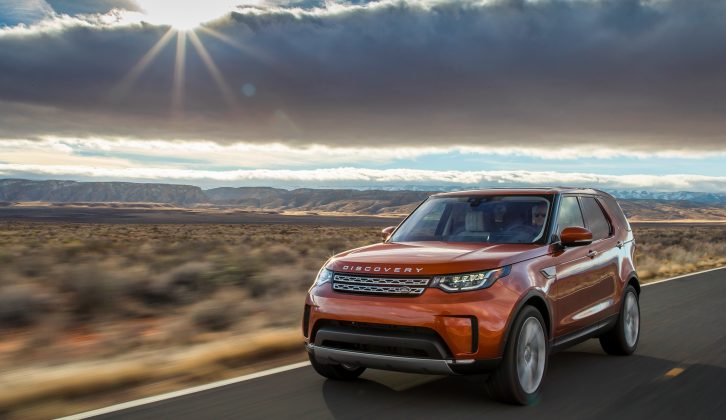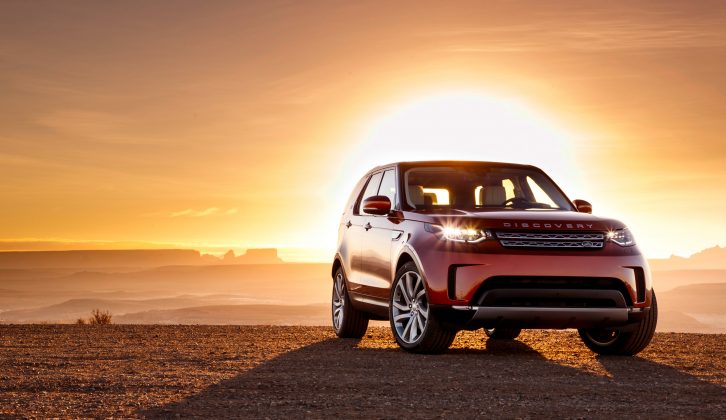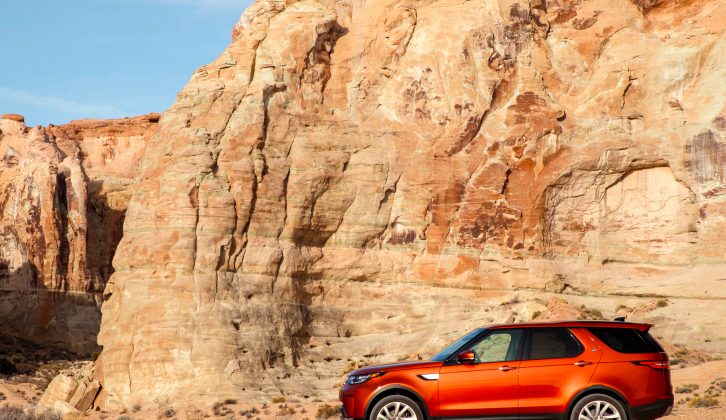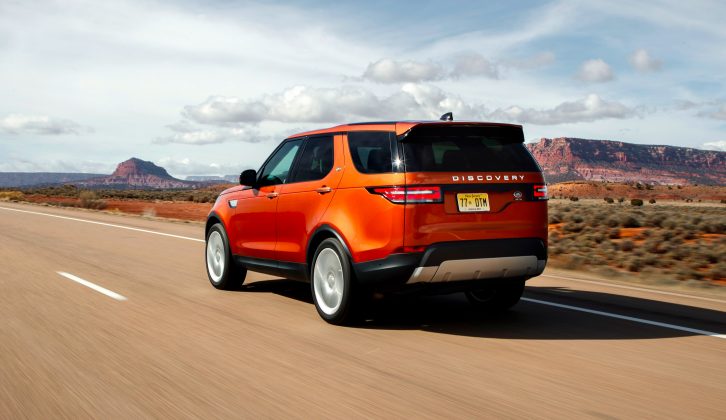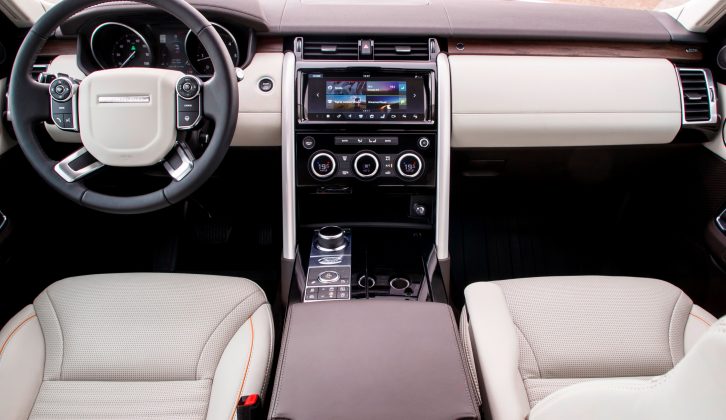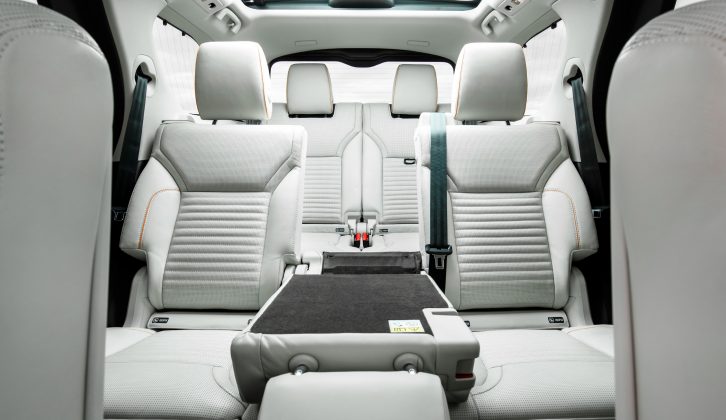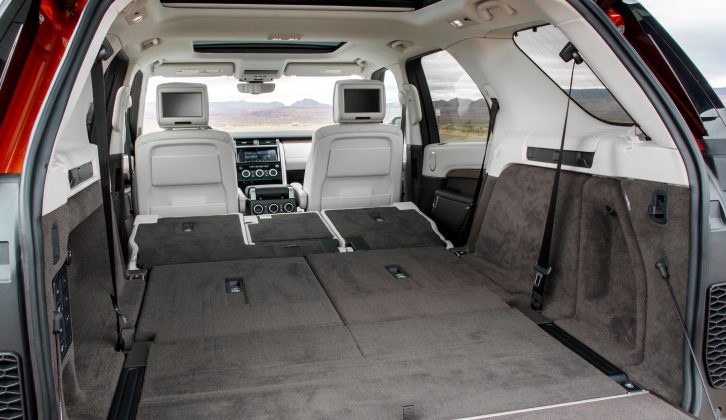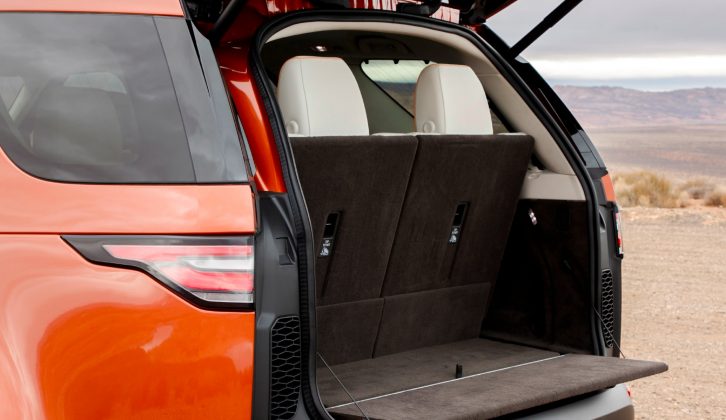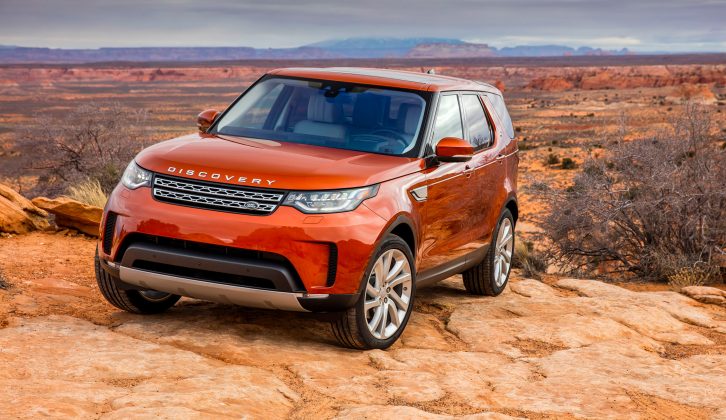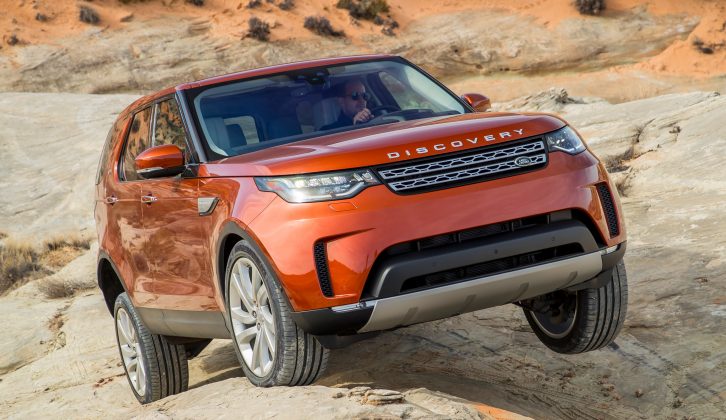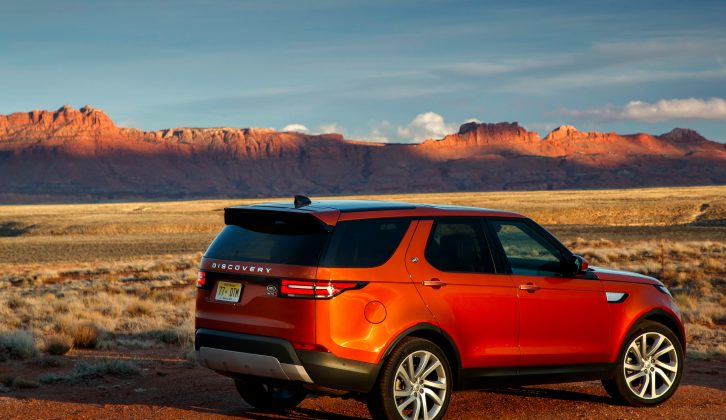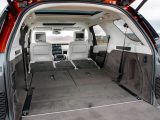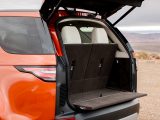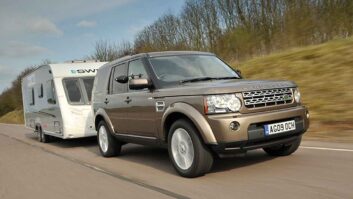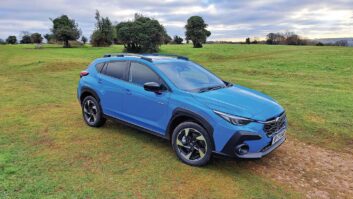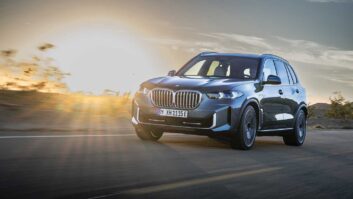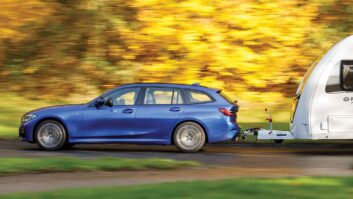Since our Tow Car Awards began back in 2007, there has been just one year when the Land Rover Discovery has failed to take home some silverware.
So, it’s fair to say that expectations in the caravanning world are sky high for the all-new Discovery 5, which is already available to order.
Much like its predecessor, the new Disco (as it’s often affectionately called by owners) is a huge seven-seater that sits above the company’s smaller Discovery Sport and below the similarly sized but much more expensive Range Rover Sport.
To that end, it should appeal to caravanners more concerned about what tow car ability it has, than the finer nuances of luxury and performance.
Prices start at a seemingly reasonable £43,495. That gets you a 2.0-litre diesel engine, much the same as the one in the smaller Discovery Sport but with an extra turbocharger to generate more power.
However, Land Rover expects the majority of buyers (especially anyone planning to tow) to go for the gutsier 3.0-litre V6 (TDV6), which costs from £50,995 because it’s only offered in the glitzier trim levels.
What’s new?
Pretty much everything. The Discovery 5 is built on entirely new and much more sophisticated underpinnings than its predecessor, something Land Rover claims has helped shed almost half a tonne of weight.
Unsurprisingly, that’s had a big impact on fuel economy and CO2 emissions. The 3.0-litre V6 diesel engine – one of very few things that has been carried over from the old Discovery 4 – manages a claimed 39.2mpg, while the new 237bhp 2.0-litre diesel engine (the Sd4) promises 43.5mpg.
Mind you, although the new Discovery 5 is around 7% more efficient than its predecessor (comparing V6 diesel engines), it still looks rather thirsty compared with rivals like the Audi Q7 and Volvo XC90.
Of course, a weight-loss regime isn’t good for outfit matching ratios. Kerbweights across the range go from 2184kg to 2298kg, meaning the worst-case scenario is a still-useful 85% match figure of 1856kg.
In addition, less weight isn’t often a good thing for towing stability. However, Land Rover quotes a 3.5-tonne braked towing capacity for all engines in the new Disco 5, which is exactly the same as the old car could pull. Unbraked towing limits haven’t yet been released.
Behind the wheel
Unsurprisingly, the new Land Rover Discovery is quite a bit more agile than its predecessor, in no small part due to how much lighter it is.
It’s still very much geared towards comfort than sporty handling (no bad thing in our book), but along twisting country roads you can steer the car with confidence at reasonable speeds without feeling as though you’re about to tip over. True, a Volvo XC90 is more nimble, but the Discovery 5 handles in a broadly similar fashion to the easygoing Audi Q7.
The standard air suspension (a pricey option on many rivals) delivers a suitably smooth ride – or at least it did on our test route around Utah in the US. The Disco was particularly comfortable at motorway speeds where it wafted over undulations, although it’ll be interesting to see how it copes with the UK’s more challenging road surfaces.
Both 2.0-litre and 3.0-litre diesel engines are very quiet at a steady cruise. The smaller motor is more vocal when you’re accelerating hard and it doesn’t pull as eagerly at low revs. However, there’s little in it for outright performance when you really put your foot down.
The Discovery can also get you over obstacles most owners won’t even dream of tackling, thanks to a class-leading ground clearance of 283mm, a wading depth of 900mm (also best in class) and a multitude of clever electronics.
Trick towing tech
Trailer Stability Assist is fitted as standard to all versions of the Discovery 5, while a detachable tow bar adds £700 to the price. An electrically deployable version costs £985.
Go for any Land Rover-approved tow bar and you’ll also get the option to add Advanced Tow Assist. Land Rover says it’s the most advanced towing aid ever, allowing you to guide a trailer into position by following its trajectory on the main touchscreen, and controlling its path using the same rotary dial that’s used to adjust the Terrain Response system.
The feature seems very reasonably priced at £365, but to have it you’ll also need to add the Capability Plus Pack (£1100) and the Surround Camera System (£985).
Family-friendly interior
The old Discovery was certainly big inside, but it wasn’t all that clever. That’s something Land Rover has worked hard to remedy and the result is the most family-friendly SUV in the world.
Perhaps most impressive are the five rear seats, which can all be raised and lowered electrically, either by pushing buttons in the boot or via the 10in touchscreen on the dashboard.
And if you’re worried electric folding seats and young kids won’t be a good combination, Land Rover has thought of that, too: all five rear seats have weight sensors to stop them moving if someone’s sitting on them.
As you’d expect, the second-row seats slide and recline, and there’s loads of room for your knees and feet – even if you’re well over six feet tall. What you might not expect is how much space is left over for anyone sitting in the third row. Even average-sized adults will be quite comfortable back there, because there’s more headroom than in a Q7 or an XC90.
Boot space obviously depends on how many passengers you’re carrying, but whichever of the 21 different seating configurations you’ve chosen, the Discovery is a close match for its key rivals.
There’s no split tailgate like there was on the old Discovery, but that doesn’t matter because part of the boot floor now folds out, overhanging the rear bumper and acting as a handy perch for taking off your wellies.
Just the car we’d hoped for?
The new Land Rover Discovery is a brilliant all-round SUV. It’s more practical than any of its peers, suitably posh inside, great to drive and even reasonably good value. That said, you’ll want to avoid stingily equipped entry-level S trim, so expect to pay at least £50,000.
The 2.0 engine is smoother and punchier than we expected, but we reckon the 3.0 V6 diesel is worth the premium (£1500 on the same trim level), because neither engine is particularly frugal.
Of course, we’ll need to thoroughly test the new Discovery’s skills to truly see what tow car ability it has when we get hold of one with a towball in the UK. But given its impressive on-paper towing credentials, surely it has to be a front-runner for this year’s Tow Car Awards.
It’s more practical than any of its peers, suitably posh inside, great to drive and even reasonably good value
